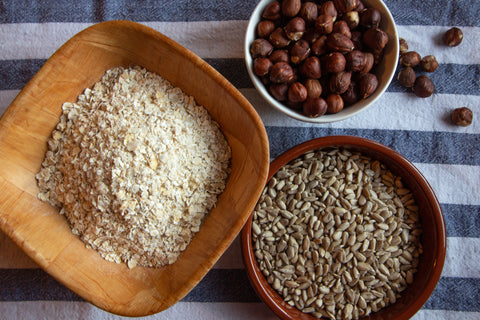What is inflammation?
Posted on January 29 2020

Despite being one of the most common words in wellness, inflammation is also pretty misunderstood. You might not be sure which type of inflammation poses a risk, or how it actually impacts your body. So, we’ve laid this out to help. It’s important to grasp the ins and outs if you want to avoid unhealthy inflammation, so to make life a little easier for you, let’s look at the difference between the two types. Here’s what you need to know.
Let’s sum inflammation up
Inflammation can pretty much be classified as pain, redness or swelling. Think what happens when you stub your toe, get a splinter, or touch something you’re allergic to. These reactions happen when you come into contact with some kind of irritant. In response to feeling under attack, your body calls immune cells and fluid to the area in order to get rid of whatever’s causing the problem, and to begin healing the injury. However, if it goes on for too long, your inflammatory response can really disrupt your body. This is the difference between the two different types of inflammation.

Acute inflammation
There are two different types of inflammation. This can cause confusion, but to put it simply, there’s the ‘good’ type and the ‘bad’ type. Your body’s natural defense system comes into play here. Acute (or ‘good’) inflammation is actually pretty amazing, and response from your body to fend off invaders and repair damage. This is the kind that happens when you get a splinter or you have an infectrion. First, your defense cells recognize that something is wrong and send out a signal to other cells in your body. In response, mast cells release chemicals that cause the blood vessels in the area to dilate. This creates little holes that allow white blood cells and fluid to exit the vessel, begin to fight the invading bacteria, and heal any tissue damage. You’ll probably notice that the area becomes swollen or red, which is caused by that fluid. It’s all part of the process, and these symptoms subside after a few days, after your immune system has done its thing.

Chronic inflammation
Chronic inflammation, on the other hand, is the type to watch out for. Inflammation that lingers too long is not a good thing. This is when your body’s defense system goes into overdrive. In these cases, the normally reliable ‘on/off’ chemical controls of inflammation are disrupted. This means inflammation continues instead of being stopped, or it’s released at the wrong time, which can damage your own tissues. Without the important ‘off’ signals, your immune cells keep letting out damaging chemicals, even in the absence of any microbial threat.
This kind of inflammation is usually the result of an immune system imbalance, but can be caused by a combination of factors. We’ll take a closer look at the causes in our next article here. It’s also tied to a plethora of health problems, be it digestive disruption, skin troubles or even joint pain. These inflammation-related health issues can often go misdiagnosed, as they’re not easily recognized as inflammation. Basically, when it comes to chronic inflammation, it works on a microscopic level, meaning you won’t see it with your eyes until it is bad enough to cause something like a swollen joint. Fortunately, there are solutions and steps you can take for an anti-inflammatory lifestyle. We go into more detail about that here.

What to remember
When it’s a one-time thing, inflammation is nothing to think about too much. In fact, it actually does your body some good. Without it, you wouldn’t be able to heal injuries or defend your body from infection or disease. But when it’s chronic, inflammation becomes a bother. It can easily become a problem in its own right, making you feel pretty lousy, and acting as a springboard for other health issues. The solution is to figure out your inflammatory triggers or environments. Although that might sound easier said than done, understanding how inflammation works is the first step in knowing how to prevent it.
Shop Wellness & Immunity >





